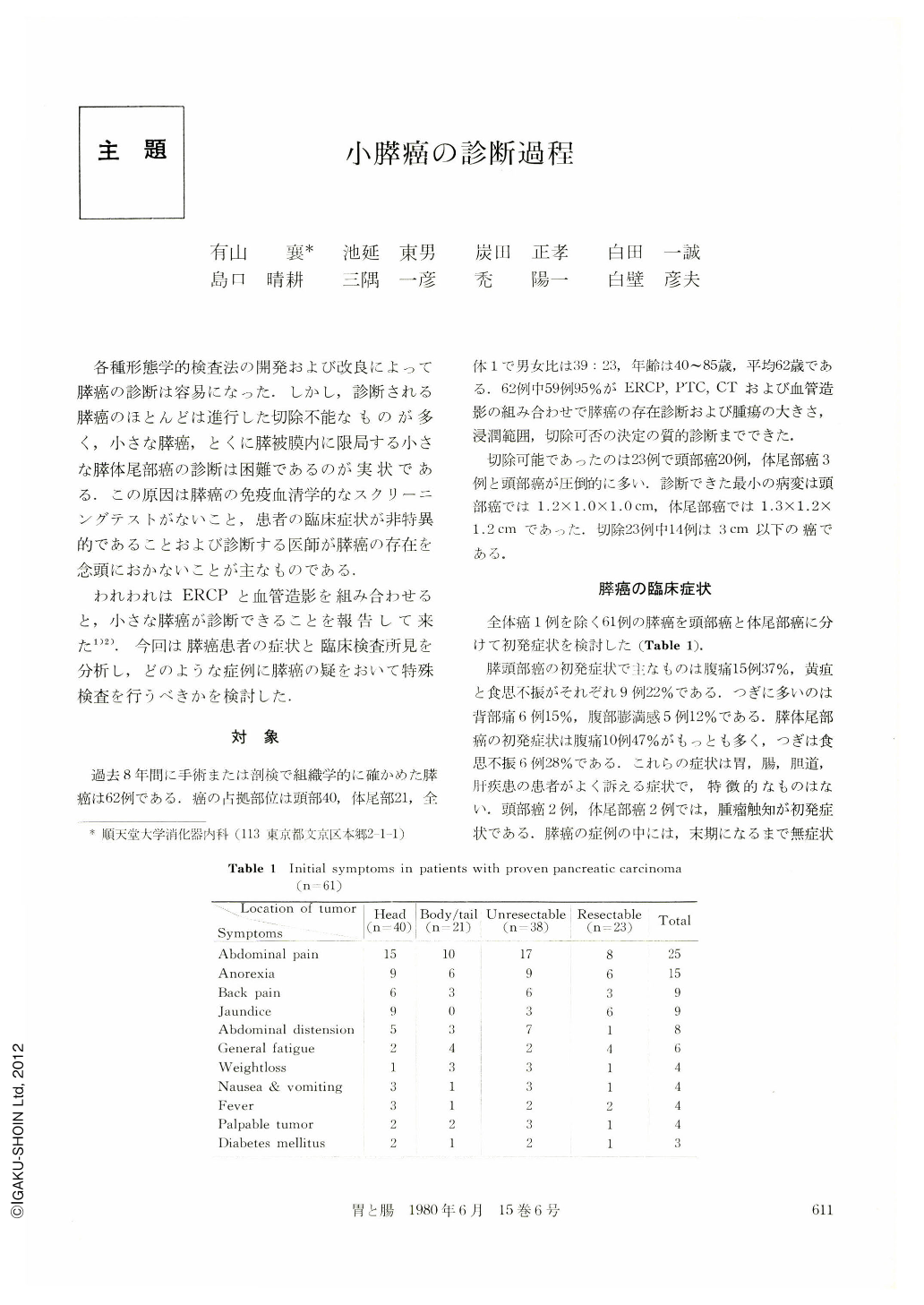Japanese
English
- 有料閲覧
- Abstract 文献概要
- 1ページ目 Look Inside
各種形態学的検査法の開発および改良によって膵癌の診断は容易になった.しかし,診断される膵癌のほとんどは進行した切除不能なものが多く,小さな膵癌,とくに膵被膜内に限局する小さな膵体尾部癌の診断は困難であるのが実状である.この原因は膵癌の免疫血清学的なスクリーニングテストがないこと,患者の臨床症状が非特異的であることおよび診断する医師が膵癌の存在を念頭におかないことが主なものである.
われわれはERCPと血管造影を組み合わせると,小さな膵癌が診断できることを報告して来た1)2).今回は膵癌患者の症状と臨床検査所見を分析し,どのような症例に膵癌の疑をおいて特殊検査を行うべきかを検討した.
Clinical symptoms and abnormalities of laboratory examinations in 62 patients with proven pancreatic carcinoma were studied. The following indications for detailed examination of the pancreas have been evolved for the study of patients with small resectable pancreatic carcinoma: (1) vague abdominal symptoms, where abnormalities of the upper GI or the biliary tract cannot be detected by routine racliologic and/or endoscopic examination; (2) abnormalities of laboratory examinations especially elevation of serum LAP, ALP, amylase level, decrease of serum cholinesterase level, elevation of urine amylase value and abnormality of glucose tolerance test. The diagnosis of pancreatic carcinoma must be established within two months from onset of initial symptom since those tumors diagnosed after three months from onset of symptom are unresectable. ERCP is the most reliable method for detecting pancreatic carcinoma and very small tumor can easily be detected. Angiography should be considered as a complementarly examination to ERCP and is particularly useful to predict possible resectability of pancreatic carcinoma. Twenty-three out of 62 carcinomas of the pancreas were resectable with 14 of those being less than 3cm. Smallest lesion in the head was 1.2×1.0cm and in the body/tail was 1.3×1.2cm.

Copyright © 1980, Igaku-Shoin Ltd. All rights reserved.


